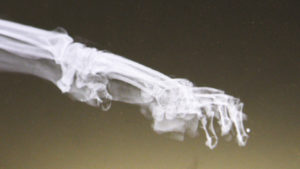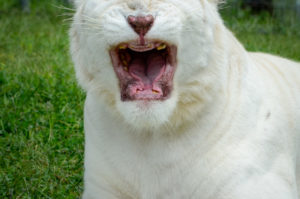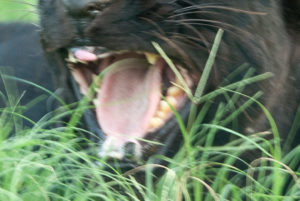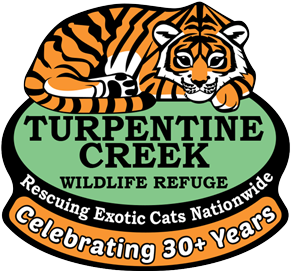The Painful Lives of “Safe” Big Cats
September 5, 2017

No big cat is ever safe, even if they have been declawed and defanged. Declawing and defanging are two painful attempts at making a wild animal safe enough to be handled by humans, but nothing can make a dangerous wild animal safe enough to be a pet.
The declawing process removes the last bone at the knuckle on each toe. Cats walk with most of their weight on their toes when you remove the toe it forces them to shift their weight further back on bones and muscles not naturally made for this purpose.
In house cats, declawing increases the likelihood of poor behaviors like not using the litter box correctly, spraying, biting, aggression and later in life arthritis. Big cats have similar behavior problems, but they are garunteed to get arthritist since they are larger and put more weight on their feet.
Another painful risk with declawing is that if they don’t get every little bit of the bone, the claw will attempt to grow back, but not like a normal claw. These claw cunks are deformed and cannot exit the paw. This causes pain and discomfort for the animals. Over all it is a very painful life for any cat, big or small, that is declawed.

Defanging is another painful process done to many wild animals to try to make them ‘safer.’ Defanging is when the canine teeth are removed. Although big cats chew their food with their back teeth, they still need their front teeth to grip the meat so that they can chew it properly.
Defanging can be done one of two ways, either the teeth could be ground down, leaving the nerves exposed and pockets for rot to happen, or the canines can be pulled out. Most of the time defanging is done by a veterinarian, but in some cases, owners will attempt this process on their own. Teeth that were not removed decay faster making it ever harder for the animal to eat. Most defanged cats have to be put on boneless meat, and then extra calcium supplemented to make up for the lack of bones in their diet.
This was is the case with Vada, a black leopard, whose owner used pliers to remove his teeth so that he could continue to play with him. Vada came to TCWR in a lot of pain. He had to have multiple procedures to fix the damage, but he spent the remainder of his life living an uncomfortable life due to his owner’s desire to make him ‘safe.’
The USDA’s Animal Welfare Act addresses the issue of declawing and defanging big cats and non-human primates, but these procedures are not yet illegal. Until it is made illegal road side zoos, magicians, and pseudo-sanctuaries will continue to inhumanely declaw and defang big cats so that the public can interact with them.

“Declawing or the removal of the canine teeth (fangs) in wild or exotic carnivores or nonhuman primates are no longer considered to be appropriate veterinary care unless prescribed by the attending veterinarian for treatment of individual medical problems of the paws or teeth. These procedures are no longer deemed to be acceptable when performed solely for handling or husbandry purposes since they can cause considerable pain and discomfort to the animal and may result in chronic health problems. These procedures are no longer allowed under the Animal Welfare Act. This notice is consistent with the current position statement issued by the American Veterinary Medical Association.” – USDA Animal Welfare Act
In the past, declawing was seen as a standard practice, but as more research has been done, the animal care field has found out the poor consequences of these actions. Good rescue facilities are willing to adapt and learn about new standards of animal husbandry. Their goal is to do whatever is in the best interest of the animals in their care. They are willing to change policies and procedures for the betterment of the animals.
Over the 25 years that Turpentine Creek has been open, our policies and procedures have changed. We’ve learned better ways to build habitats, feed, and care for our animals. We’ve evolved and adapted as needed over the years. We do not declaw, defang, or allow hands-on interaction with our animals. For our declawed and defanged animals, we have them in a pain management program to help them live as normal lives as possible. We will continue to learn and grow as long as we are needed making sure what we do is in the best interest of the animals in our care.
